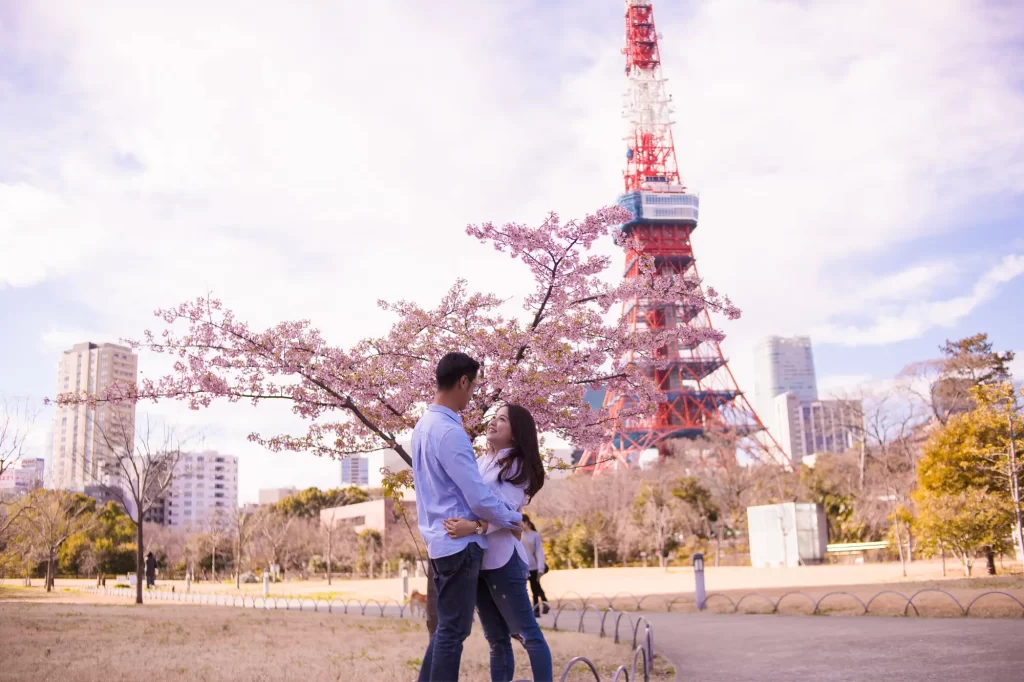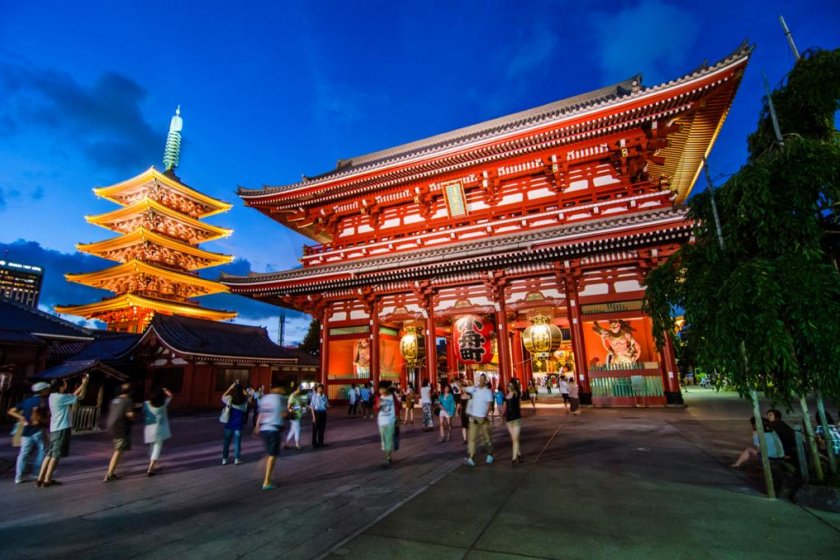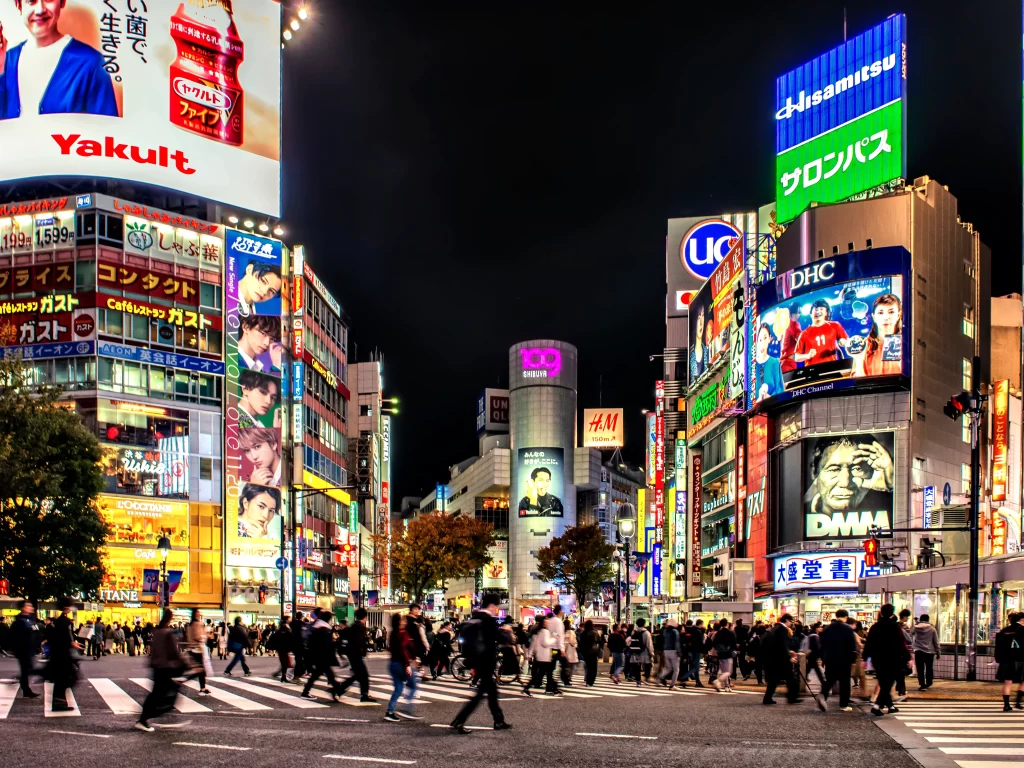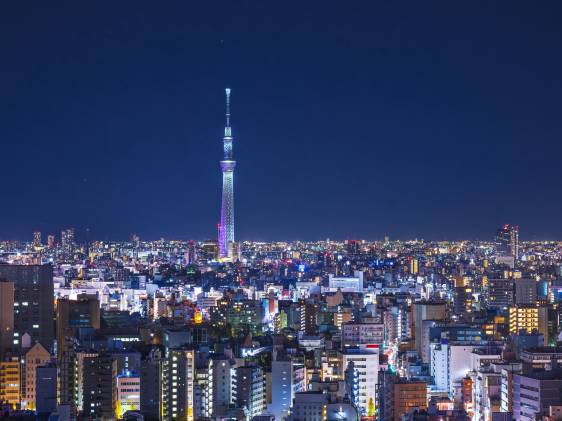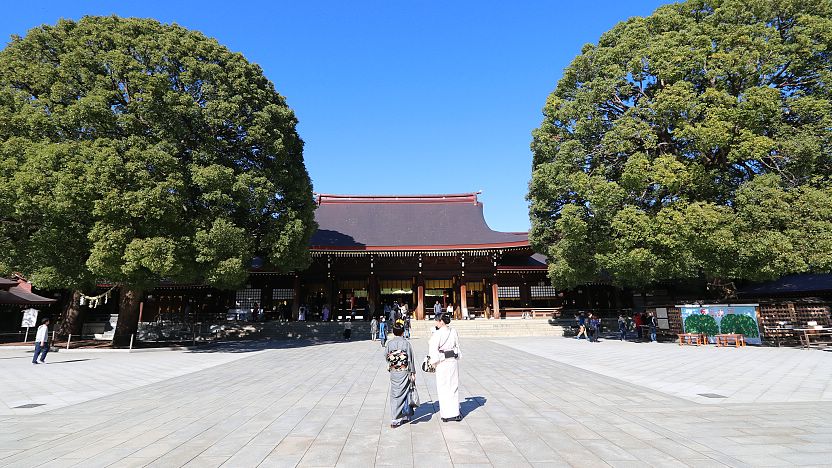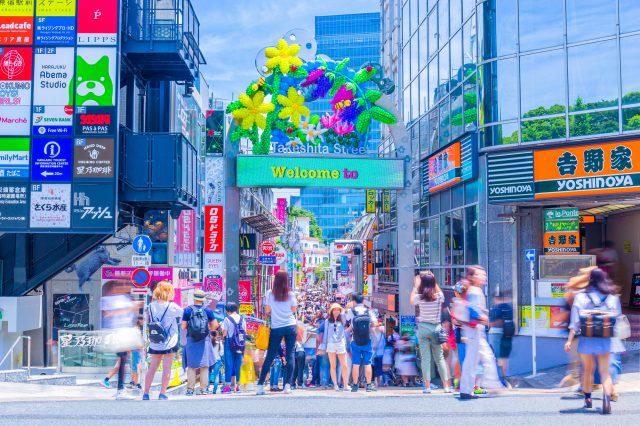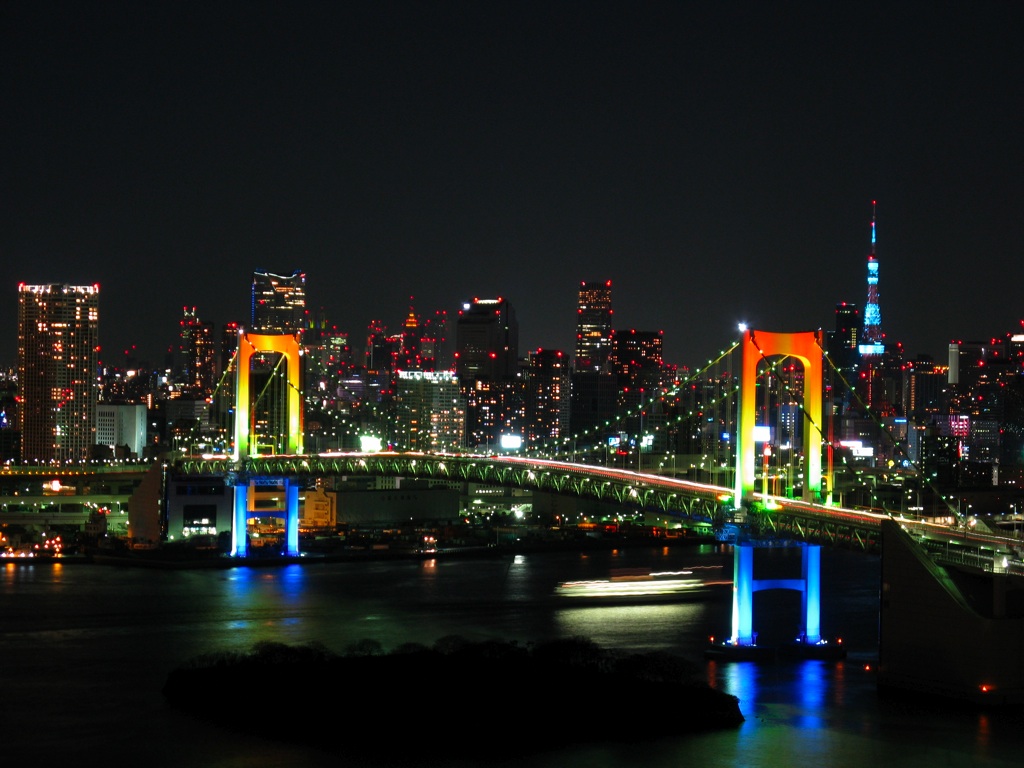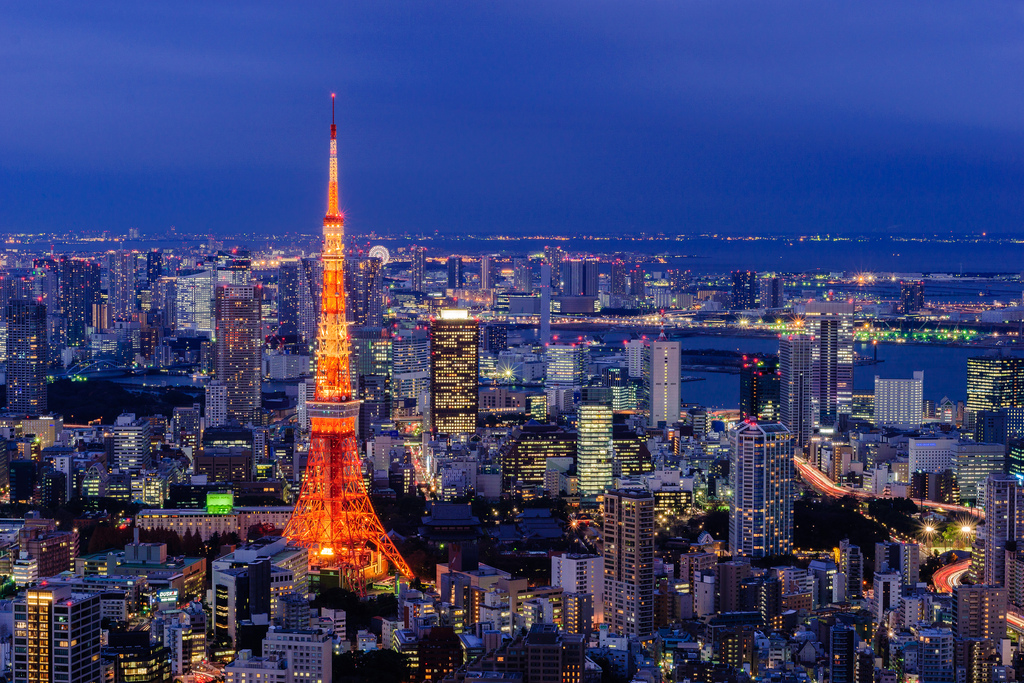The 8 best places to take pictures in Tokyo
Tokyo, a vibrant tapestry of tradition and modernity, is a photographer’s paradise. From its ancient temples and serene gardens to its neon-lit skyscrapers and bustling streets, the city offers endless opportunities to capture stunning images. Whether you’re a seasoned professional or an enthusiastic amateur, Tokyo’s diverse landscapes and energetic atmosphere will leave you with unforgettable photographic memories.
To help you navigate this visual playground, here’s a curated list of the 8 best places to take pictures in Tokyo, along with some insider tips for getting the perfect shot:
1. Sensō-ji Temple and Asakusa District
-
Why it’s special: Immerse yourself in the heart of Tokyo’s rich history at Sensō-ji Temple, the city’s oldest temple, dating back to the 7th century. The vibrant vermilion buildings, ornate carvings, and traditional architecture offer a quintessential Japanese backdrop. Asakusa, the surrounding district, boasts a lively atmosphere with bustling souvenir shops and street food vendors, perfect for capturing the essence of old Tokyo.
-
Best photo spots:
- Sensō-ji Temple: The imposing Kaminarimon Gate (Thunder Gate) serves as a magnificent entrance to the temple grounds. Capture the iconic red paper lantern and the throngs of visitors beneath it.
- Nakamise-dori Shopping Street: This traditional shopping street lined with colorful stalls provides vibrant scenes. Look for interesting details like intricate origami displays or close-up shots of unique souvenirs.
- Five-storied Pagoda: Ascend the pagoda for breathtaking panoramic views of the temple complex and the surrounding Asakusa district.
-
Tips: Arrive early in the morning to avoid crowds and capture the temple bathed in the golden light of sunrise. Be mindful of respecting the religious significance of the temple; avoid posing with prayer rituals or blocking access for worshippers.
-
Nearest Station: Asakusa Station (Metro Ginza Line, Toei Asakusa Line)
2. Shibuya Crossing
-
Why it’s special: Shibuya Crossing is a Tokyo icon, renowned for its massive pedestrian scramble crossings. Witness the hypnotic ballet of thousands of people crossing the intersection in all directions at once. It’s a dynamic and energetic scene that epitomizes the frenetic pace of Tokyo.
-
Best photo spots:
- Mag’s Park Rooftop: Head to the rooftop of the Mag’s Park department store for an elevated perspective of the crossing. You’ll get a clear view of the sheer volume of people and the organized chaos of the intersection.
- Shibuya Scramble Statue: Capture a photo with the loyal Hachiko statue, a popular meeting point in Shibuya, commemorating the story of a faithful dog who waited for his deceased owner for years.
- Starbucks on the corner: Grab a coffee and a window seat at the Starbucks on the corner for a comfortable vantage point to observe the crossing action.
-
Tips: Be patient and wait for a red light to capture the peak volume of pedestrians crossing. Use a wide-angle lens to encompass the entire scene. For a unique perspective, try shooting at night when the neon lights illuminate the crossing.
-
Nearest Station: Shibuya Station (JR Lines, Tokyo Metro Lines, Tokyu Lines, Keio Inokashira Line)
3. Tokyo Skytree
-
Why it’s special: Soar above the city and capture breathtaking panoramic views from Tokyo Skytree, the tallest structure in Japan. Standing at a staggering 634 meters, the tower offers a 360-degree perspective of Tokyo’s sprawling cityscape, from the iconic landmarks to the distant mountains.
-
Best photo spots:
- Observation Decks: Both the Tembo Deck (350 meters) and the Tembo Galleria (450 meters) offer stunning views. Use a telephoto lens to zoom in on specific landmarks or capture a panoramic image showcasing the vastness of the city.
- Skytree at Night: Ascend the tower during twilight to witness the magical transformation of Tokyo at dusk. Capture the city bathed in the warm glow of the setting sun and the twinkling lights emerging as night falls.
-
Tips: Purchase tickets online in advance to avoid long queues, especially during peak season. Consider visiting during clear weather conditions for the best visibility.
4. Meiji Shrine and Yoyogi Park
-
Why it’s special: Immerse yourself in tranquility amidst the bustling city at Meiji Shrine, a Shinto shrine dedicated to Emperor Meiji and his wife, Empress Shoken. The serene atmosphere, characterized by towering cedar trees and traditional architecture, offers a beautiful contrast to the neon lights of Tokyo. Yoyogi Park, adjacent to the shrine, is a sprawling green space popular for picnicking, people-watching, and capturing the vibrant energy of Tokyoites enjoying their leisure time.
-
Best photo spots:
- Meiji Shrine Gates: Capture the grandeur of the shrine’s entrance gates, the impressive Inner and Outer Torii gates, made of cypress wood.
- Inner Garden: Explore the serene inner garden and capture the majestic cedar trees lining the walkway. Look for interesting details like traditional Japanese bridges and koi ponds.
- Yoyogi Park: In spring, capture the vibrant spectacle of cherry blossoms in bloom. Throughout the year, photograph the park’s diverse activities, from picnicking families to street performers.
-
Tips: Visit during weekdays for a quieter experience. Opt for a telephoto lens to capture close-up details of the shrine’s intricate architecture.
-
Nearest Station: Harajuku Station (JR Yamanote Line, Tokyo Metro Lines, Tokyu Toyoko Line)
5. Harajuku and Takeshita Street
-
Why it’s special: Immerse yourself in Tokyo’s vibrant youth culture in Harajuku, a district renowned for its unique fashion styles and trendy shops. Takeshita Street, the heart of Harajuku, is a pedestrian-only paradise bursting with colorful fashion boutiques, quirky cafes, and cosplayers showcasing their elaborate costumes.
-
Best photo spots:
- Fashion Statements: Capture the essence of Harajuku fashion by photographing the flamboyant outfits and creative hairstyles sported by the locals.
- Colorful Storefronts: The streets are adorned with brightly colored storefronts and quirky decorations. Use a wide-angle lens to capture the overall energy and vibrancy of the area.
- Cosplay Culture: Harajuku is a haven for cosplayers. Ask permission before snapping photos and capture their elaborate costumes and expressive poses.
-
Tips: Visit on weekends for the full experience, but be prepared for crowds. Wear comfortable shoes as Takeshita Street is best explored on foot.
-
Nearest Station: Harajuku Station (JR Yamanote Line, Tokyo Metro Lines, Tokyu Toyoko Line)
6. Shinjuku Gyoen National Garden
-
Why it’s special: Escape the urban jungle and find serenity at Shinjuku Gyoen National Garden, a vast oasis in the heart of Tokyo. Originally an imperial garden, it now offers a stunning display of landscaped gardens, tranquil ponds, and seasonal blooms. The diverse flora and peaceful atmosphere provide a picturesque backdrop for photos.
-
Best photo spots:
- Seasonal Blooms: Capture the vibrant colors of cherry blossoms in spring, or the fiery hues of autumn foliage.
- The Dutch Garden: This section features a traditional European-style layout with symmetrical flower beds and manicured hedges. Capture the geometric patterns and vibrant flower colors.
- The Shinjuku Gyoen National Garden Greenhouse: Photograph the diverse plant life housed within the greenhouse, including exotic flowers and tropical flora.
-
Tips: Visit during weekdays to avoid crowds. Opt for a macro lens to capture the delicate details of flowers and foliage. Consider renting a bicycle to explore the vast garden grounds efficiently.
-
Nearest Station: Shinjuku Gyoenmae Station (Shinjuku Line)
7. Odaiba and Rainbow Bridge
-
Why it’s special: Discover Tokyo’s modern marvels on Odaiba, an artificial island built on reclaimed land in Tokyo Bay. Explore the futuristic architecture, amusement parks, and entertainment facilities. The iconic Rainbow Bridge, a suspension bridge illuminated by colorful lights at night, offers a breathtaking entrance to the island.
-
Tips: Capture the bridge from various angles. During the day, use a telephoto lens to zoom in on the intricate details of the bridge’s structure. At night, capture the bridge’s colorful illumination using a tripod to avoid camera shake.
-
Best photo spots:
- Palette Town: This entertainment complex features a giant Ferris wheel offering panoramic views of Odaiba and the surrounding cityscape. Capture the panoramic view from the top of the Ferris wheel.
- TeamLab Borderless: This interactive digital art museum provides a unique and futuristic photo opportunity. Experiment with the various installations and capture the mesmerizing light displays.
- Rainbow Bridge: This iconic landmark is a must-photograph subject. Capture it from various angles – during the day for a clear.
8. Tokyo Tower and Roppongi Hills
-
Why it’s special: Experience a touch of Parisian flair in Roppongi Hills, a sophisticated district known for its high-end shops, art galleries, and vibrant nightlife. Tokyo Tower, a 333-meter tall communications and observation tower inspired by the Eiffel Tower, stands as a prominent landmark in the area.
-
Best photo spots:
- Tokyo Tower Observation Deck: Ascend the tower for panoramic views of the city skyline, including a unique perspective of Rainbow Bridge in the distance. Capture the vastness of Tokyo’s urban sprawl.
- Roppongi Hills Mori Tower: For a different perspective, visit the observation deck of the Mori Tower in Roppongi Hills. The higher vantage point offers breathtaking views of Tokyo, including Tokyo Tower itself.
- Roppongi Hills Architecture: Capture the sleek and modern architecture of Roppongi Hills, featuring glass-walled buildings and landscaped plazas. Look for interesting reflections and geometric patterns.
-
Tips: Visit Tokyo Tower during sunset for a magical view of the city bathed in golden light. Purchase tickets online in advance to avoid queues, especially during peak season.
-
Nearest Station: Akasaka-mitake Station (Tokyo Metro Lines, Toei Oedo Line) for Roppongi Hills; Shiba-koen Station (Mita Line, Toei Asakusa Line) for Tokyo Tower.
FAQs
When is the best time to visit Tokyo for photography?
Tokyo offers stunning visuals year-round. However, some seasons offer unique photographic opportunities:
- Spring (March-May): Capture the vibrant spectacle of cherry blossoms in bloom, particularly in parks like Shinjuku Gyoen National Garden and Ueno Park.
- Summer (June-August): Enjoy clear skies and vibrant colors, perfect for capturing the city’s energy during festivals and firework displays.
- Autumn (September-November): Witness the fiery hues of fall foliage, particularly beautiful in Meiji Shrine and other gardens.
- Winter (December-February): Capture the city illuminated with festive lights and enjoy the peaceful atmosphere of snowy mornings (less frequent in recent years).
What are some essential things to pack for photography in Tokyo?
- Camera with interchangeable lenses: A versatile camera with a wide-angle lens for capturing landscapes and a telephoto lens for zooming in on details will be beneficial.
- Tripod: Essential for low-light photography and capturing sharp images at night.
- Extra batteries and memory cards: Ensure you have enough to capture all your photo opportunities.
- Neutral-density filter: Useful for controlling shutter speed and creating smooth effects like water flowing or blurry crowds during long exposures.
- Comfortable walking shoes: Exploring Tokyo often involves a lot of walking, so comfortable shoes are crucial.
- A power bank: This will be helpful for keeping your camera charged throughout the day.
Do I need a special permit to take photos in Tokyo?
Generally, no special permits are required for taking photos in public spaces in Tokyo. However, be respectful of private property and avoid using flash photography in museums or religious sites where it might be prohibited. If photographing people, it’s always polite to ask for permission before taking their picture, especially when capturing close-up portraits.
Where can I find more information about photography regulations in Tokyo?
For the latest information on photography regulations in Tokyo, you can refer to the official websites of the following:
- Tokyo Metropolitan Government (https://www.metro.tokyo.lg.jp/english/)
- Japan National Tourism Organization (https://www.jnto.go.jp/)
By following these tips and exploring the suggested locations, you’re sure to capture stunning and memorable photos on your Tokyo adventure! Remember, the best photos often come from capturing the city’s unique energy and atmosphere, so don’t be afraid to experiment and have fun with your photography in Tokyo.

